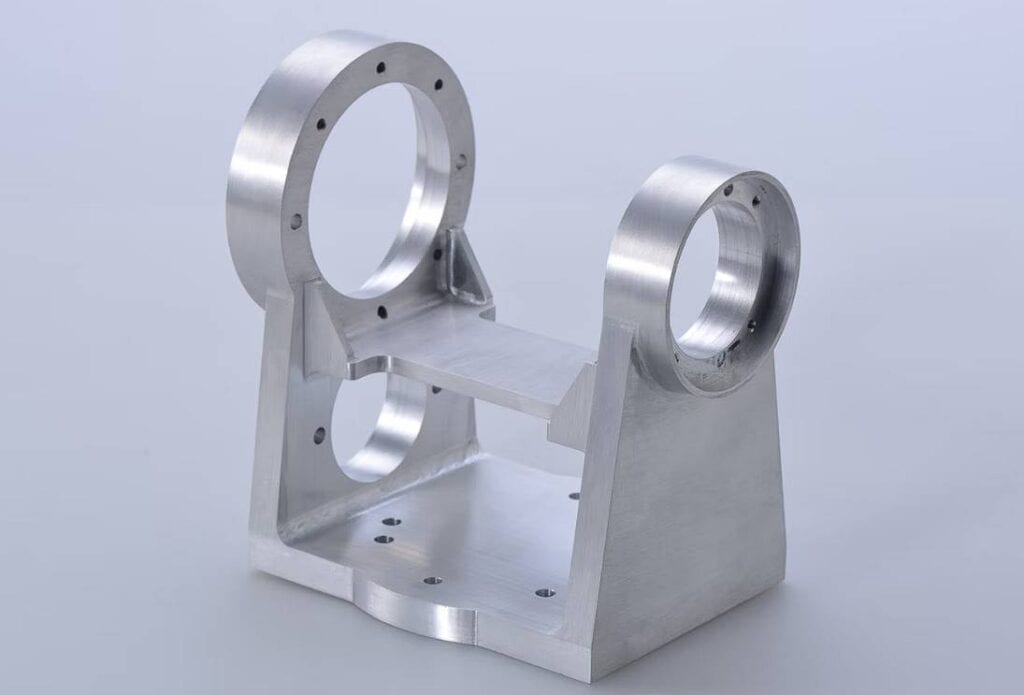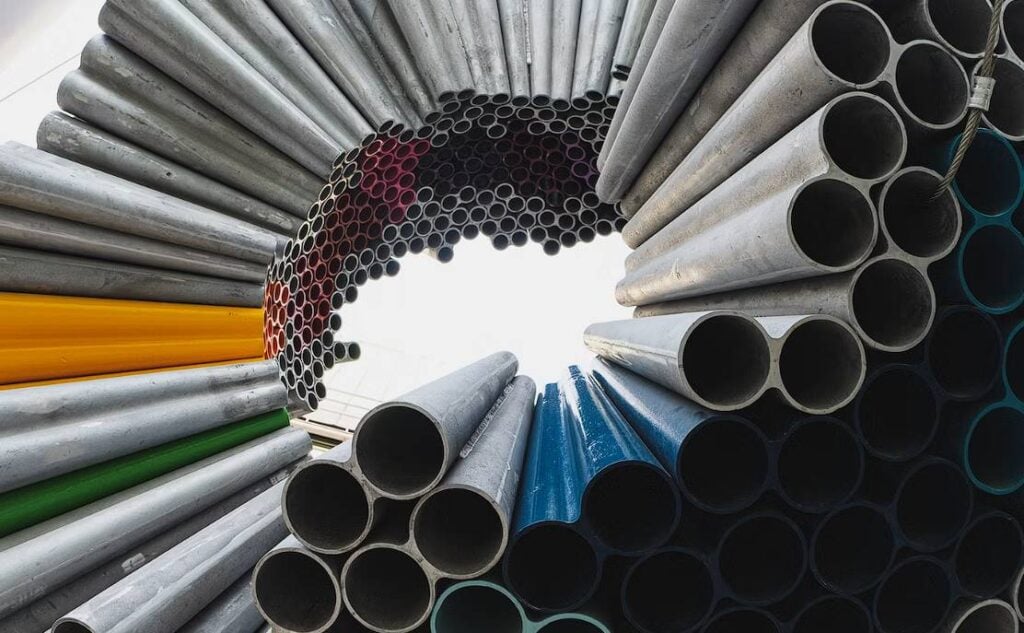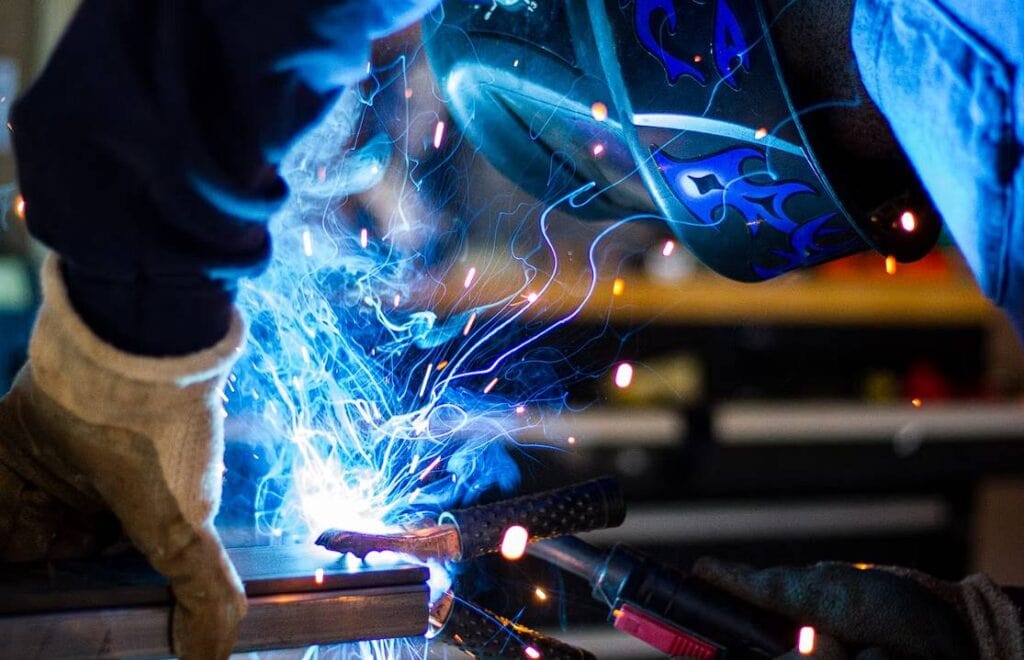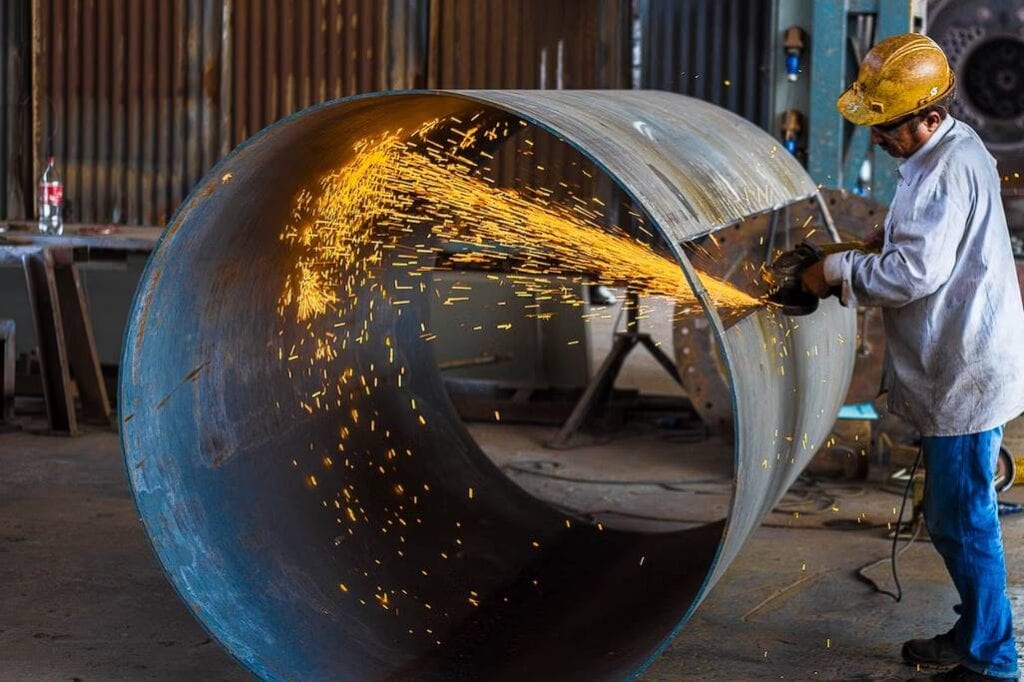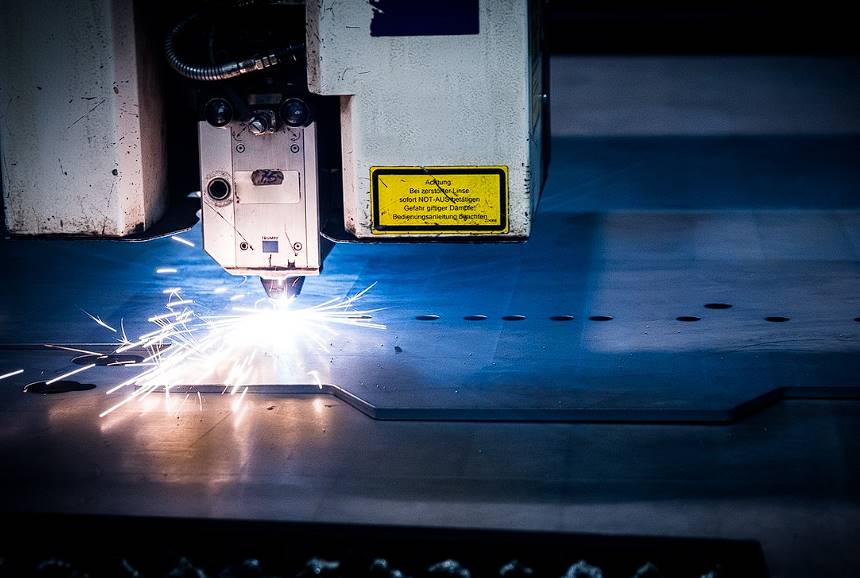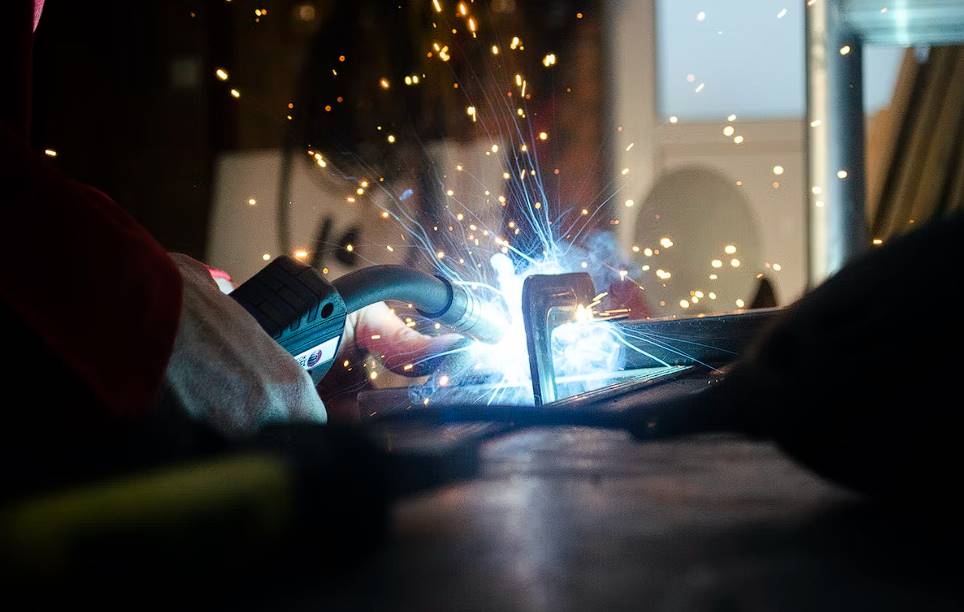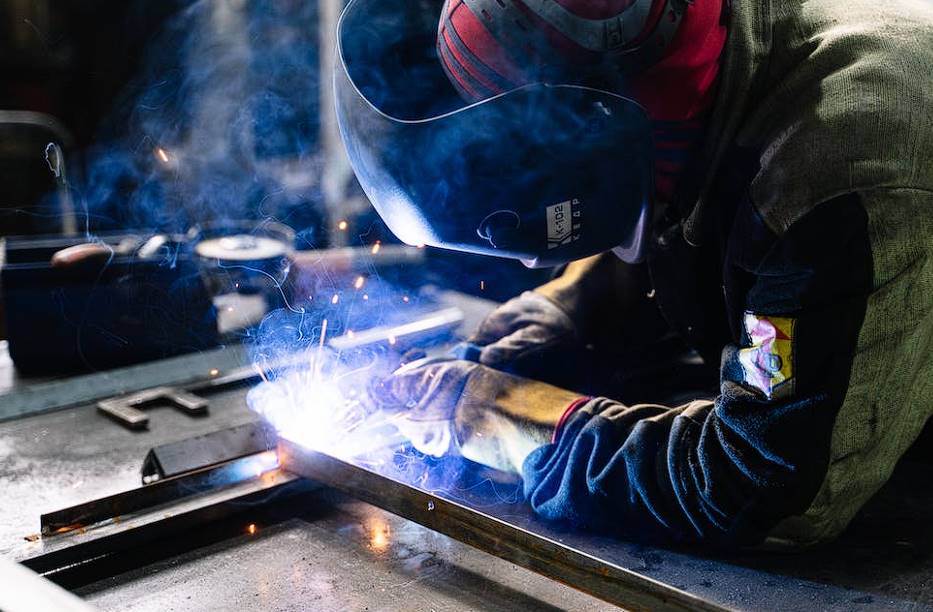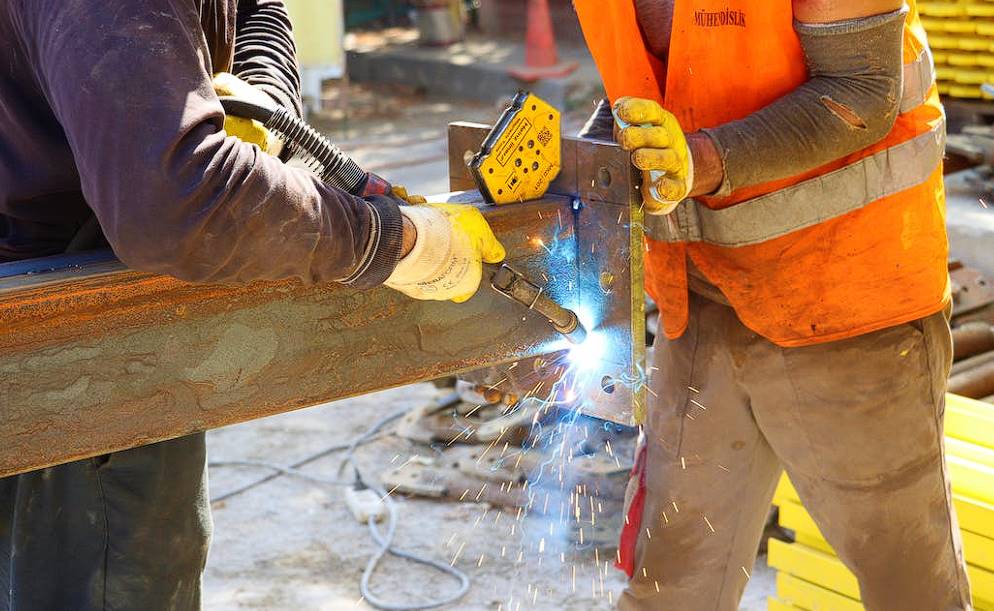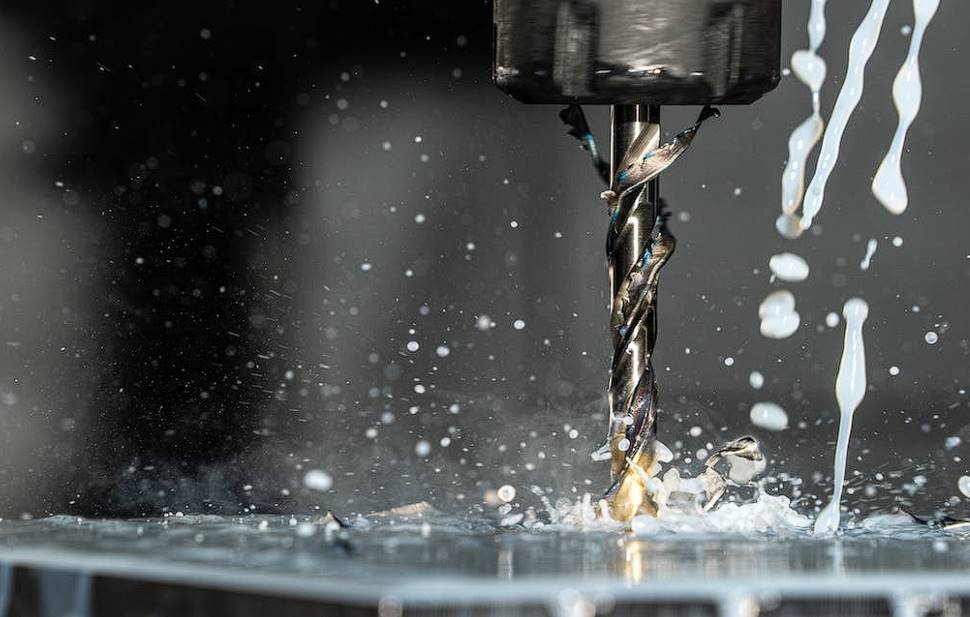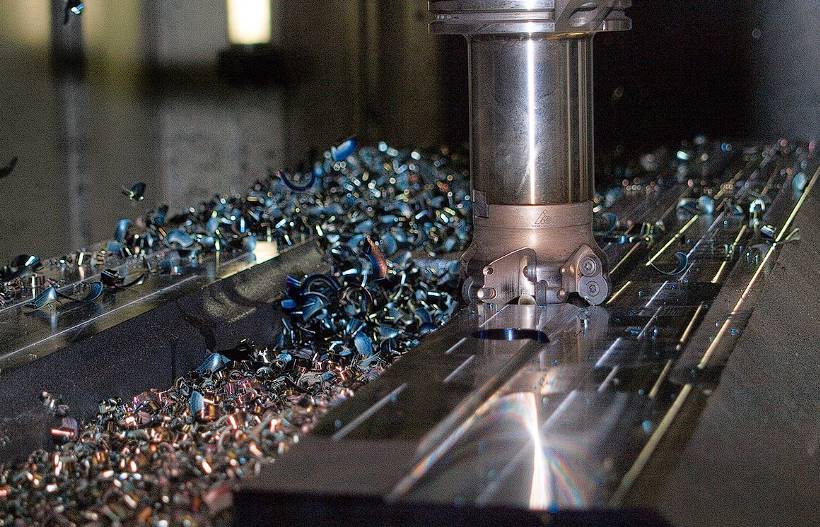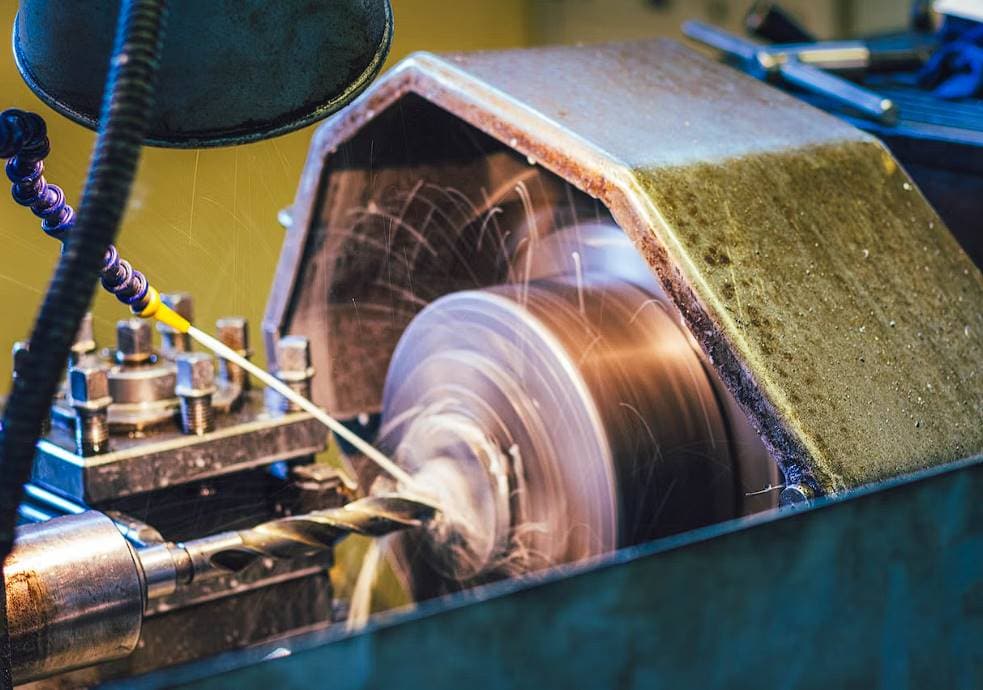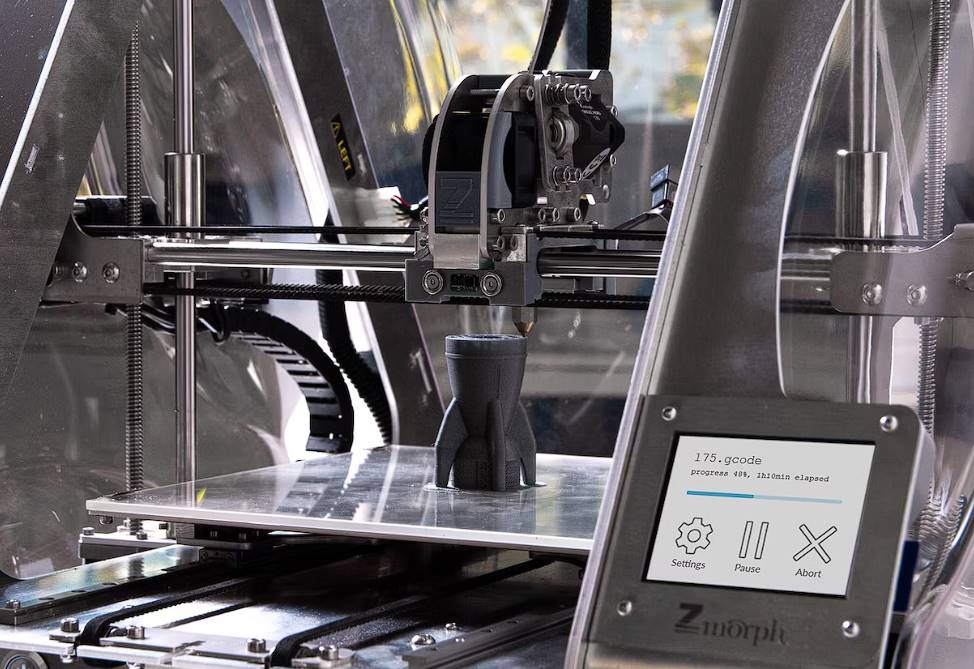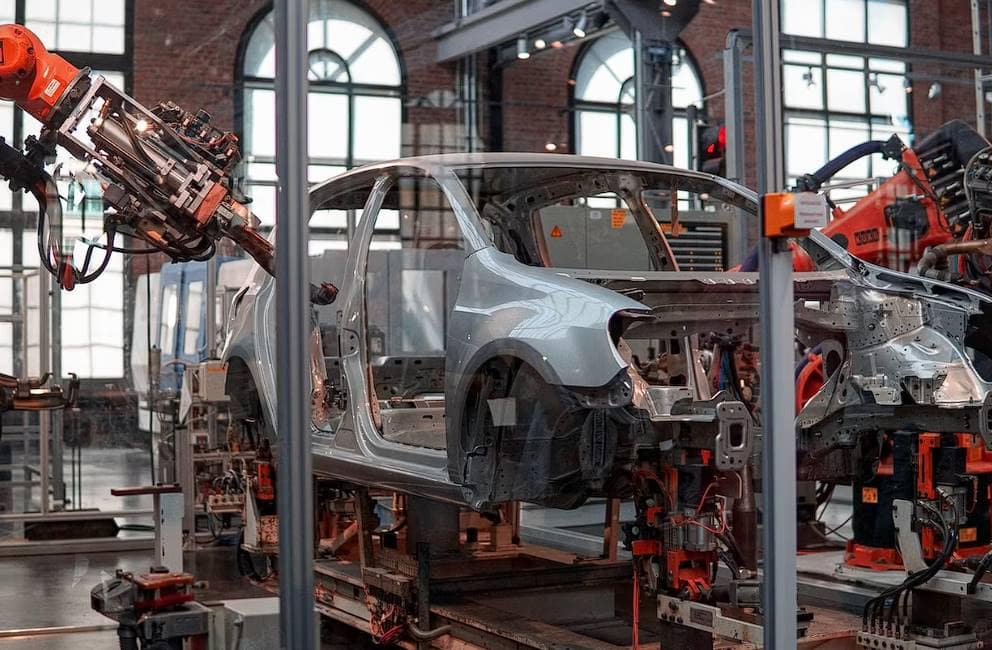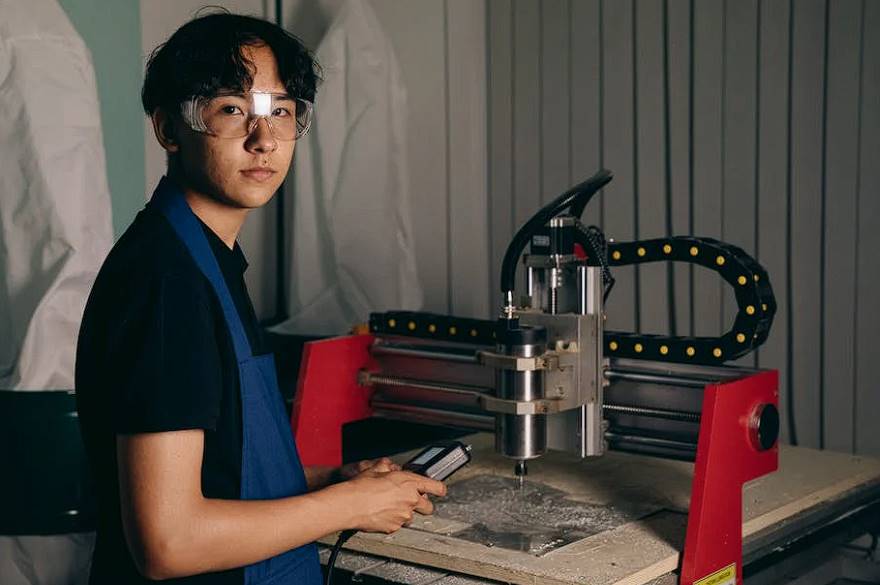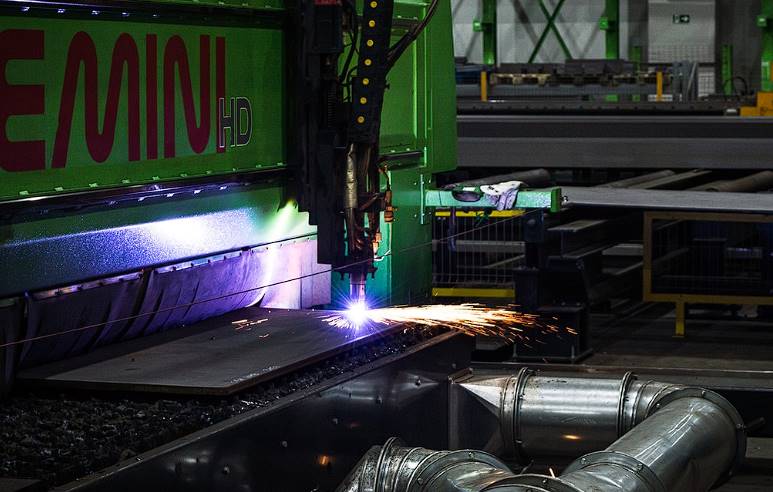As one of the most basic ways to work with metal, rolling significantly affects steel's chemical, physical, and mechanical properties. This changes its structure and abilities to meet the needs of current engineering and construction. Rolled steel is used to make everything from the tall buildings that define cityscapes to the cars that keep us moving and the many tools and products that make our daily lives easier.
What changes, though, does steel go through when it is rolled? How do these changes make it work better in different situations? This blog aims to explain the complicated rolling process and show how it makes steel stronger, more flexible, easier to work with, and more useful in general. Whether you're interested in engineering, working in the building, or just curious about the things that make up our world, this look into what happens when you roll steel will help you learn more about this critical material.
Mechanical Property Enhancements
The rolling process significantly enhances the mechanical properties of materials, particularly steel, by manipulating the microstructure through deformation and controlled cooling. This transformation is crucial for producing steel with a balance of strength and flexibility, making it suitable for various automotive, construction, and manufacturing applications.
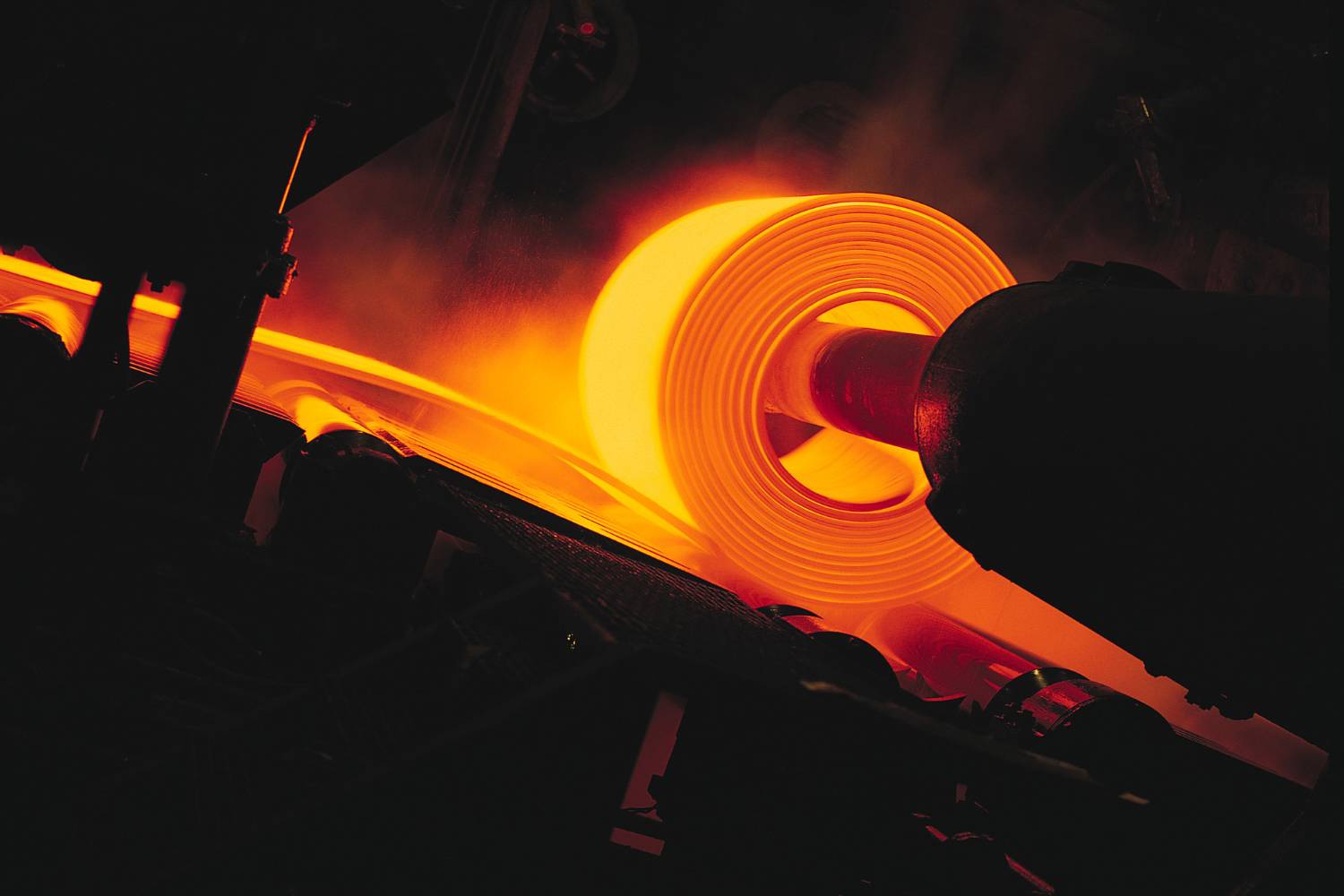
Grain Refinement And Phase Transformation
Rolling refines grain, improving surface hardness and reducing surface roughness. The process also induces a change from tensile to compressive residual stress on the material's surface, enhancing its mechanical properties such as ultimate tensile strength, yield strength, bendability, and toughness. The degree of these enhancements depends on specific rolling parameters, including contact stress and the number of rolling cycles.
Controlled Rolling And Cooling
The development of controlled rolling and cooling technology allows for precise microstructural design in steels. This approach enables the control of phase transformations to generate the desired microstructure, achieving the required material properties. For instance, combining hot rolling with ultrafast cooling and quenching and partitioning (Q&P) processes refines the grain structure in Fe-Si-Mn-Nb steel, producing a martensitic matrix with embedded retained austenite grains. This microstructure improves the steel's strength, while the retained austenite enhances plasticity and work hardening ability through the Transformation Induced Plasticity (TRIP) effect.
Impact Of Q&P Process On High-Strength Steels
The Q&P process of advanced high-strength steels significantly enhances their strength and flexibility. This process involves quenching to a temperature below the martensite start temperature but above the martensite finish temperature, followed by an isothermal treatment to enable carbon diffusion from supersaturated martensite to residual austenite. The result is a high-strength steel demonstrating improved ductility and toughness due to the TRIP effect, which is superior to traditional heat-treated samples.
Environmental And Safety Considerations
While rolling and its associated processes offer significant advantages in material property enhancement, they pose environmental and safety challenges. Steelmaking is among the most carbon-intensive, contributing to global greenhouse gas emissions. Innovations such as the HIsarna ironmaking process and using renewable hydrogen for steel production are being explored to reduce these emissions and make steelmaking more sustainable.
Surface Finish Improvements
The surface finish of steel products is a critical aspect of their performance and aesthetic appeal, especially in applications where surface integrity is paramount. The rolling process, particularly cold rolling, plays a significant role in enhancing the surface finish of steel. A detailed analysis of the rolling process and its impact on surface finish reveals several key insights, highlighting the technological advancements and methodologies employed to achieve superior surface finishes.
Optimal Cooling And Lubrication
Research indicates that optimal cooling ahead of entry into the roll gap, coupled with the use of lubricants, significantly improves the surface finish of hot-rolled steel. The cooling process aims to control the temperature of the steel, ensuring uniform thermal conditions and minimising thermal gradients that could lead to surface imperfections.
Lubrication, however, reduces friction between the rolls and the steel surface, further contributing to a smoother finish. The combination of these two factors not only enhances the aesthetic quality of the steel and its functional properties by reducing the incidence of surface defects.
Work Roll Characteristics
The characteristics of work rolls, including their material composition, surface roughness, and maintenance, are pivotal in determining the final surface finish of rolled steel. High-quality, precision-ground work rolls with appropriate surface treatments ensure that the steel sheet or strip has a smooth and uniform surface. Regular maintenance and inspection of work rolls are essential to prevent surface degradation over time, which could transfer defects onto the rolled product.
Micro-Plasto-Hydrodynamic Lubrication
A notable mechanism contributing to improved surface finish in steel rolling is micro-plastic-hydrodynamic lubrication (MPHL). This phenomenon occurs when lubricant trapped in surface asperities or pits is drawn out due to the sliding motion between the roll and steel. This effectively forms a thin lubricating film that minimises direct contact and, thus, wear on the steel surface. MPHL is particularly relevant in cold rolling processes, where the combination of high pressures and lower temperatures makes the lubrication regime more complex.
Technological Innovations
Advancements in rolling technology, including automated control systems and real-time monitoring of rolling conditions, have enabled manufacturers to achieve and maintain high surface finish standards. These technologies allow for precise control over rolling parameters, such as speed, pressure, and temperature, ensuring consistent quality across production batches.
Furthermore, roll design and material science innovations continue to push the boundaries of what is achievable in terms of surface finish, making it possible to meet the increasingly stringent requirements of industries such as automotive, aerospace, and consumer electronics.
Environmental Considerations
While the focus on improving surface finish is often driven by product quality and performance objectives, environmental considerations also play a role. For example, the selection of lubricants and cooling fluids is influenced by their environmental impact and the need for sustainable manufacturing practices. Advances in eco-friendly lubricants and cooling fluid recycling systems reflect the steel industry's commitment to reducing its environmental footprint.
Dimensional Accuracy And Tolerance
Metal products' precision is paramount in industries where even the slightest deviation can lead to significant repercussions. Metal rolling, a process integral to shaping and forming metal sheets, is crucial in ensuring these products' dimensional accuracy and tolerances. Through technological advancements and meticulous process control, metal rolling achieves the high standards required for various applications.
Understanding Tolerances in Metal Rolling
Tolerances in metal rolling refer to the acceptable variations in size and dimensions from the original specifications. These are essential because absolute precision is practically unattainable due to inherent variations in metal forming processes. Tolerances provide a range within which a product is considered acceptable, balancing the need for precision with the realities of manufacturing.
Types of Tolerances
Tolerances vary widely, from large tolerances acceptable in construction steel, where strength is more critical than exact dimensions, to minimal tolerances required in precision instruments. Tolerances apply to lengths and widths, thicknesses, holes, slots, and other geometrical features of metal products.
Impact of Rolling Format on Tolerances
The type of rolling—hot or cold—significantly affects the dimensional accuracy and tolerances of the final product. While cost-effective and robust, hot-rolled steel comes with more comprehensive tolerance ranges due to the high temperatures involved, which can lead to more significant variability in dimensions. Cold-rolled steel, processed further at room temperature, achieves tighter tolerances and better surface finishes, making it suitable for high-precision applications.

Role of Work Rolls in Achieving Precision
Work rolls are critical in the rolling process, directly impacting the metal's thickness reduction and surface finish. The design, material, and maintenance of work rolls influence the uniformity and precision of the rolled product. High-quality work rolls, properly aligned and maintained, ensure consistent pressure distribution and minimal deviation from desired dimensions.
Techniques for Enhancing Dimensional Accuracy
Advancements in rolling technology, such as automated control systems and real-time monitoring, have significantly improved the ability to maintain tight tolerances. These technologies allow for precise adjustments to rolling parameters, ensuring uniform thickness and adherence to specified tolerances across the entire length and width of the metal sheet.
Challenges and Solutions
Despite technological advancements, challenges remain in achieving and maintaining the desired dimensional accuracy and tolerances. Variations in material properties, wear and tear on rolling equipment, and thermal expansion can all affect the outcome. Regular maintenance, calibration of equipment, and quality control checks are essential to mitigate these challenges.
Dimensional accuracy and tolerances are crucial aspects of metal rolling, affecting the performance and suitability of metal products for specific applications. By carefully controlling the rolling process, using high-quality work rolls, and implementing advanced technologies, manufacturers can achieve the precision required for today's demanding industrial applications.
Conclusion
Rolling is a crucial process in steel production, affecting its chemical, physical, and mechanical properties. This process is essential for various automotive, construction, and manufacturing industries. The rolling process leads to mechanical property enhancements, such as grain refinement and phase transformation, which improve surface hardness and reduce roughness. Controlled rolling and cooling technology allows for precise microstructural design, achieving desired material properties. For example, combining hot rolling with ultrafast cooling and quenching and partitioning (Q&P) processes refines the grain structure in Fe-Si-Mn-Nb steel, producing a martensitic matrix with retained austenite grains.
The Q&P process of advanced high-strength steels significantly enhances their strength and flexibility, resulting in high-strength steel with improved flexibility and toughness due to the TRIP effect. However, rolling poses environmental and safety challenges, as the steelmaking industry is one of the most carbon-intensive. Innovations like the HIsarna ironmaking process and using renewable hydrogen for steel production are being explored to reduce emissions and make steelmaking more sustainable.
The surface finish of steel products is crucial for performance and aesthetic appeal, and the rolling process, particularly cold rolling, significantly enhances it. Optimal cooling and lubrication, along with lubricants, significantly improve the surface finish of hot-rolled steel.
Work roll characteristics, including material composition, surface roughness, and maintenance, are crucial in determining the final surface finish of rolled steel. High-quality, precision-ground work rolls with appropriate surface treatments ensure a smooth and uniform surface. Micro-plastic-hydrodynamic lubrication (MPHL) is a notable mechanism that contributes to the surface finish of steel rolling. Technological innovations, such as automated control systems and real-time monitoring of rolling conditions, have enabled manufacturers to achieve and maintain high surface finish standards.
Environmental considerations also improve surface finish. The selection of lubricants and cooling fluids is influenced by their environmental impact and the need for sustainable manufacturing practices. Metal rolling, a process integral to shaping and forming metal sheets, is crucial in ensuring dimensional accuracy and tolerances. Tolerances in metal rolling refer to the acceptable variations in size and dimensions from the original specifications. The type of rolling format, hot or cold, significantly affects the dimensional accuracy and tolerances of the final product.
Work rolls are critical in the rolling process, directly impacting the metal's thickness reduction and surface finish. Advancements in rolling technology, such as automated control systems and real-time monitoring, have significantly improved the ability to maintain tight tolerances. Challenges remain in achieving and maintaining desired dimensional accuracy and tolerances. Still, manufacturers can achieve the precision required for today's demanding industrial applications through careful control of the rolling process, the use of high-quality work rolls, and the implementation of advanced technologies.
Content Summary
- The blog explores the significant impact of rolling on steel, highlighting its importance in technology and material science.
- Rolling affects steel's chemical, physical, and mechanical properties, altering its structure for various applications.
- The process plays a crucial role in engineering and construction, contributing to the production of buildings, vehicles, and everyday tools.
- The mechanical properties of steel are enhanced through deformation and controlled cooling during rolling.
- Grain refinement and phase transformation improve surface hardness, reduce roughness, and enhance mechanical properties like tensile strength and toughness.
- Controlled rolling and cooling techniques allow for precise microstructural adjustments, optimising material properties.
- The Q&P process enhances the strength and flexibility of advanced high-strength steels through a specific quenching and partitioning technique.
- Environmental and safety considerations are discussed, acknowledging the carbon-intensive nature of steelmaking.
- Innovations aim to reduce greenhouse gas emissions and make steel production more sustainable.
- The surface finish of steel, crucial for both performance and aesthetics, is significantly improved by rolling.
- Before rolling, optimal cooling and lubrication techniques enhance the surface finish and reduce defects.
- Work roll characteristics, including material composition and maintenance, are key to achieving a high-quality surface finish.
- Micro-plastic-hydrodynamic lubrication minimises wear and improves the surface in cold rolling processes.
- Technological advancements in rolling technology enable precise control over production parameters, ensuring consistent quality.
- The steel industry's focus on environmental considerations influences the choice of lubricants and cooling fluids.
- Dimensional accuracy and tolerances are paramount in industries requiring high precision in metal products.
- Tolerances in metal rolling accommodate acceptable variations in dimensions, which is crucial for balancing precision with manufacturing realities.
- The type of rolling—hot or cold—affects the dimensional accuracy and tolerances achievable.
- Work rolls are essential for thickness reduction and surface finish, influencing the uniformity and precision of rolled products.
- Advanced control systems and real-time monitoring have improved the maintenance of tight tolerances in rolling.
- Challenges in achieving precise dimensional accuracy and tolerances remain, necessitating regular equipment maintenance and quality control.
- The blog aims to elucidate the complex rolling process and its effects on steel, making it more relatable for those interested in engineering, construction, and material science.
- Grain refinement during rolling enhances material properties, making steel more adaptable to engineering needs.
- The rolling process's impact on steel's mechanical properties is vital for its use in diverse industries.
- Phase transformations during rolling contribute to steel's improved bendability and toughness.
- The development of controlled rolling techniques marks a significant advancement in steel manufacturing.
- The Q&P process's role in creating high-strength steels demonstrates the importance of microstructural control.
- Environmental challenges in steelmaking prompt the exploration of innovative, more sustainable processes.
- Surface integrity is crucial for steel products in high-visibility applications, driving advancements in rolling techniques.
- Achieving superior surface finishes requires a combination of technological innovations and best practices in rolling.
- The role of work rolls in determining the final surface quality of steel underscores the importance of precision in rolling operations.
- Cold rolling benefits from the MPHL phenomenon, highlighting the interplay between lubrication and surface finish.
- Real-time monitoring and automated control systems represent significant technological progress in the rolling process.
- The steel industry's commitment to sustainability influences practices around lubricant and cooling fluid use.
- Understanding and managing tolerances in metal rolling is crucial for meeting the precision requirements of various applications.
- The distinctions between hot and cold rolling reflect their different impacts on steel's dimensional accuracy.
- High-quality work rolls and advanced rolling technologies enhance precision in the rolling process.
- Maintaining tight tolerances is a key outcome of technological advancements in rolling.
- Regular maintenance and quality control are essential strategies for addressing challenges in achieving desired tolerances.
- The blog highlights the significance of rolling in the optimisation of steel for various applications, from construction to consumer products.
- Enhancements in mechanical properties through rolling extend the utility of steel in modern engineering.
- Controlled cooling is critical to the rolling process, affecting the steel's final properties.
- Innovations in steel production aim to address the environmental impacts associated with traditional methods.
- The importance of surface finish in steel products is linked to functional and aesthetic considerations.
- Integrating lubrication and cooling strategies is vital for achieving the desired surface qualities in rolled steel.
- Technological improvements in work roll design contribute to enhancing steel's surface finish.
- The complexity of lubrication in cold rolling processes underscores the importance of understanding material interactions.
- Pursuing higher standards in surface finish drives innovations in rolling technology and materials science.
Frequently Asked Questions
Rolling is a fundamental process in steel production that alters steel structure to enhance its mechanical, chemical, and physical properties. This process is crucial for tailoring steel to specific engineering and construction needs.
Rolling significantly improves steel's mechanical properties, such as strength, flexibility, toughness, and hardness. This is achieved by manipulating the steel's microstructure through controlled deformation and cooling.
Grain refinement refers to the process of reducing the size of the grains within the steel's microstructure during rolling. This leads to improved surface hardness, reduced surface roughness, and enhanced mechanical properties.
Controlled rolling and cooling is a technique for precisely managing the temperature and deformation of steel during the rolling process. This allows for the controlled transformation of the steel's microstructure, achieving desired material properties.
The Q&P process enhances the strength and flexibility of advanced high-strength steels. It involves specific thermal treatments that result in a microstructure containing martensite with embedded retained austenite, which improves the steel's mechanical properties through the Transformation Plasticity (TRIP) effect.


